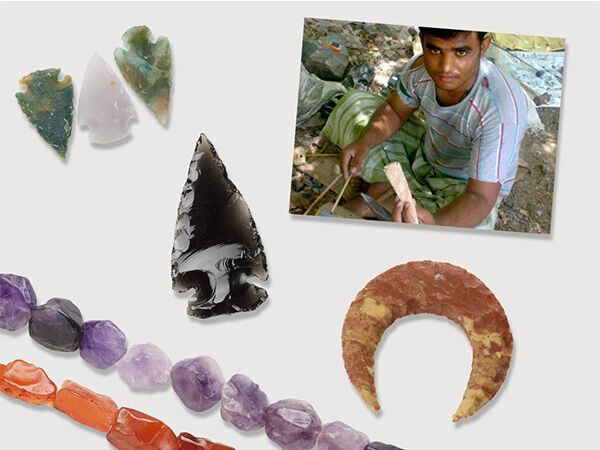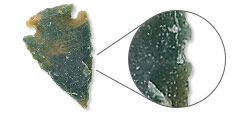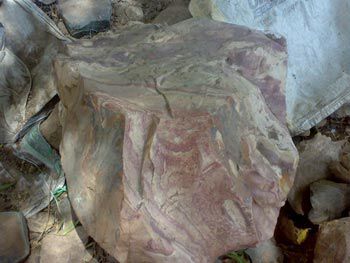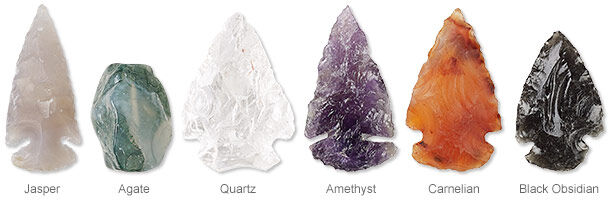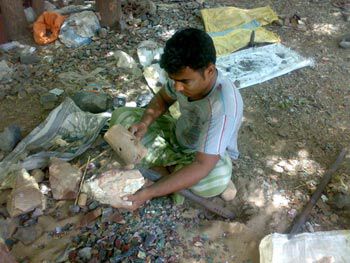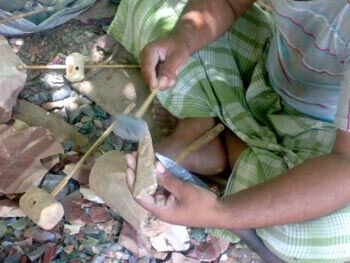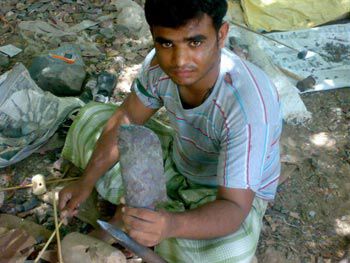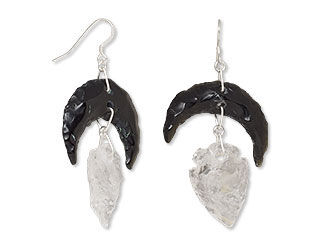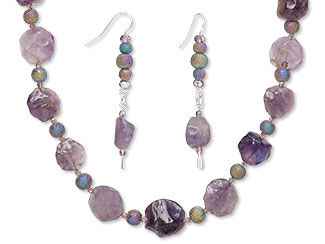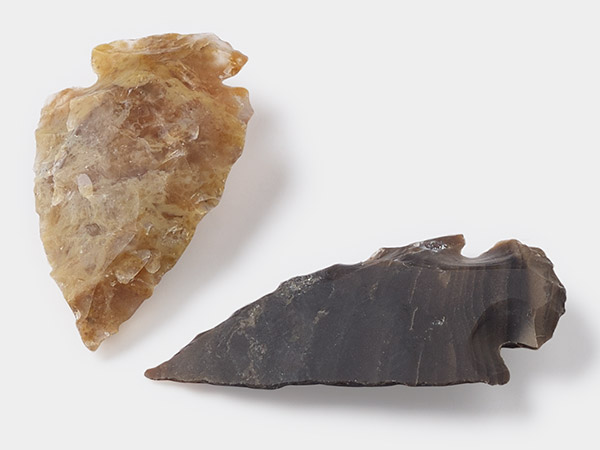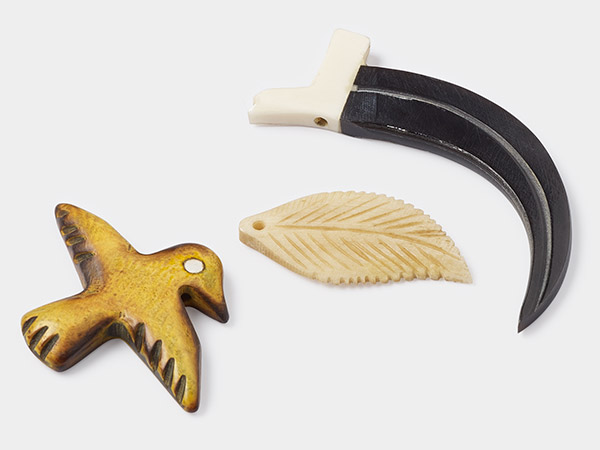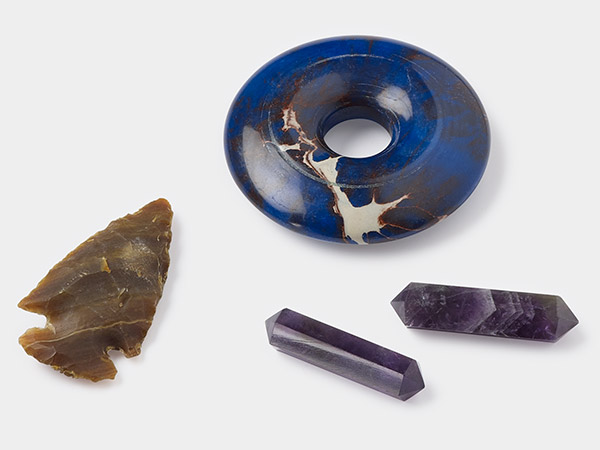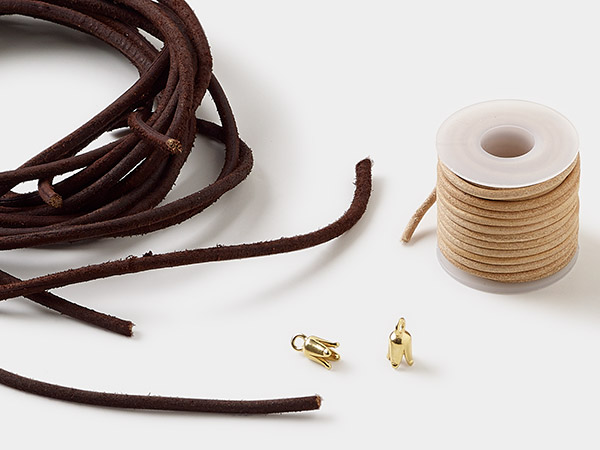Knapping: How the Ancient Art of Shaping Rough Stone Leads to Beautiful Jewelry
More and more jewelry makers are becoming aware of, and using, knapped--or flintknapped--stones in their designs. Consequently, artist-designers want to know the "backstory" of newly-acquired jewelry-making components and techniques to raise the level of their expertise and to have another story to tell about their beaded jewelry. Here, then, is the backstory of knapping.
The great outdoors is a terrific place for a relaxing walk, and if you're extremely lucky, it's also a place to stumble across historical artifacts. Depending on the geographical area, you just might uncover a shard of stone resembling an arrowhead. Consider it a treasure, rich in history created with painstaking effort. These historical artifacts and other significant materials may have been used as tools or weapons by Native Americans or primitive ancestors. The energy and skill it takes to create such a find is no easy task.
Knapping Definition
Knapping (aka flintknapping), the ancient art of shaping rough stone, is a method accomplished with various techniques and tools. The technology behind knapping can be traced back to our prehistoric ancestors as they manipulated stone to create tools, weapons or figurines. Nowadays the making of such objects is a rare art form primarily produced by enthused hobbyists, traditional craftsmen and experimental archaeologists. As an archaeologist would perform the arduous task of knapping to better grasp how prehistoric weapons or tools were made, hobbyists and craftsmen tend to use their incredible patience and detailing skills to produce one-of-a-kind works of art, jewelry and historic replicas.
Flintknapping Materials
The proper material is vital for a successful knapper. Although flint is well-known for its knapping capabilities--hence the name flintknapping--an assortment of stones are just as popular including jasper, agate, quartz, amethyst, carnelian, rainbow obsidian, sheen obsidian, mahogany obsidian as well as natural volcanic glass and others. This provides a range of colors and textures, adding variety to knapped materials and ornate projects.
Knapping Tools
Traditionally bone, antler, stone and wood tools are used for knapping; however, modern craftsmen also use metal tools to speed up the process. In India, knapping techniques are passed down through the generations. The tools used are fairly basic: buffalo horn, wooden mallet and a long metal rod--all for altering the stone's shape. Since bulky gloves can hinder the detail of knapping smaller beads and arrowheads, these expert craftsmen simply use their bare hands to grip the sharp edges of chipped glass and stone, but it's never recommended to the general public. Remember to always wear protective gear when attempting to knap stone or glass.
How to Flintknap
The practice of knapping involves breaking open a piece of hard stone, decreasing its size by removing jagged portions and flakes, then shaping the larger flakes into desired objects such as jewelry pendants, arrowheads, etc.
Pressure flaking is used to create detailed edges and unique shapes. With the use of a deer antler, buffalo horn or metal tipped tools, a considerable amount of pressure is placed against an edge in order to pop off lengthy slender flakes.
Knapping Arrowheads
Notching is what adds the creative design or practical application to the stone, such as the gaps that allows an arrowhead to attach to the thin wood shaft. Notches are formed using a combination of pressure flaking and grinding or scraping to carve out the openings. One of the most popular shapes of knapping is the arrowhead. Combined with wire-wrapping, leatherwork or beaded rope, arrowheads have multiple uses including necklace focals, bolo ties, show pieces and more.
Collecting and recapturing the history of these ancient stone objects is an inventive way to beautify modern jewelry and art. Enjoy the creativity of this historical accessory and next time you're on a nature walk, maybe you too will be lucky enough to discover an ancient piece of knapping workmanship.
Shop for Your Materials Here:
Have a question regarding this project? Email Customer Service.
Copyright Permissions
All works of authorship (articles, videos, tutorials and other creative works) are from the Fire Mountain Gems and Beads® Collection, and permission to copy is granted for non-commercial educational purposes only. All other reproduction requires written permission. For more information, please email copyrightpermission@firemtn.com.
